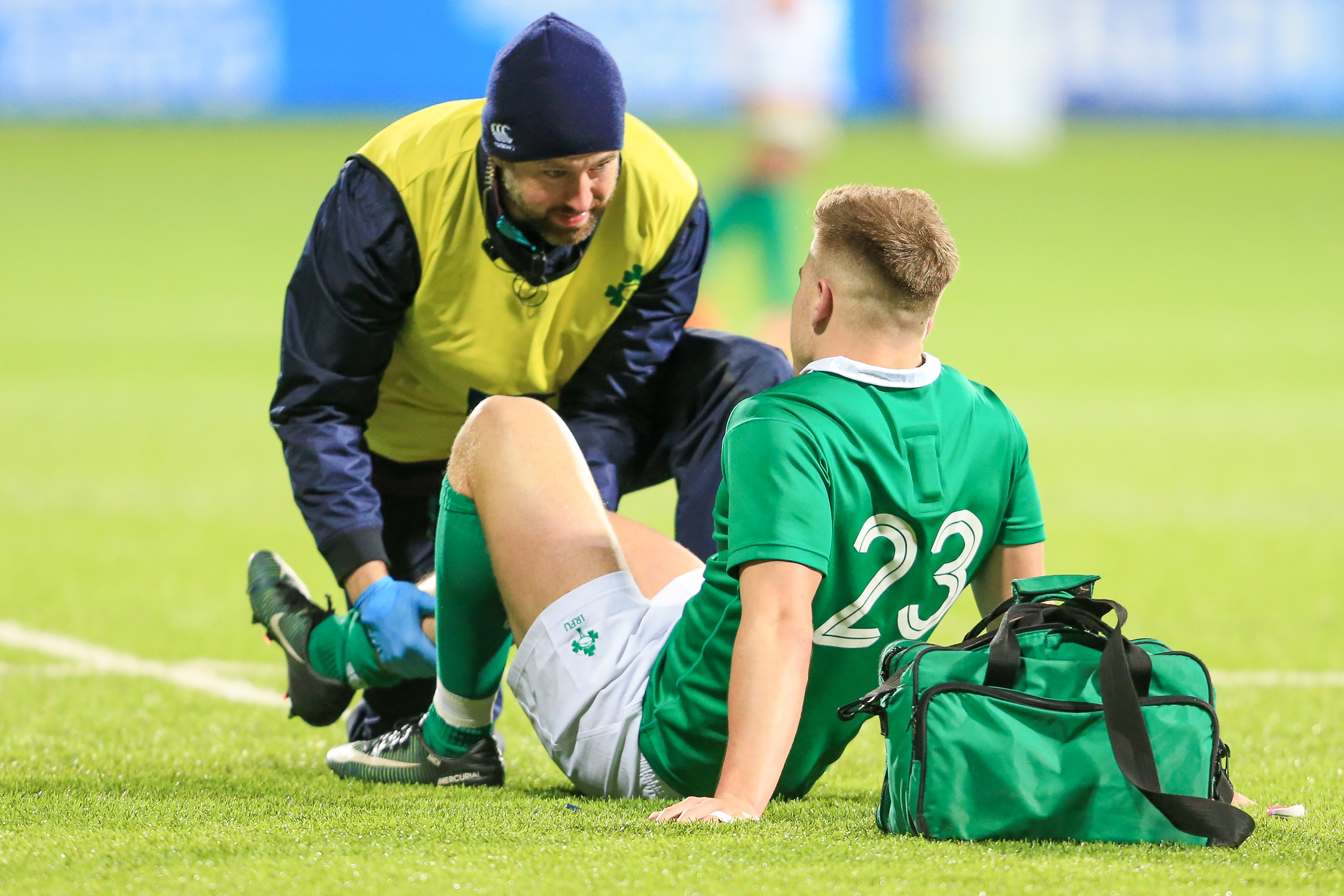
Ankle sprains are a common injury. They can vary from low grade and not very serious to the other end of the spectrum. An ankle sprain, or twisted ankle, or going over on an ankle, refers to a ligament tear which can be graded as low, moderate or severe, grade 1, 2 or 3. There are several different types of ankle sprains and when the incident happens, depending on the position of your foot, some ligaments are more susceptible to tearing than others.
There are structures other than ligaments that are damaged and it is important not to forget that. I have seen ankles, which I have been sure are broken and sent people for x-ray and there is evidence on x-ray of bone damage. I have seen other ankle injuries, which have not looked as bad but have had some bone damage. But I would never just look at an ankle and say, “Yes that’s a simple sprain do x y and z”. There are about 12 different tests, which can be carried out quickly to ascertain a clear diagnosis and the best course of action.
Often people attend Physiotherapy several months after an ankle sprain saying their ankle is stiff, “not right” or that they can “still feel it”. When this occurs one of the first things I will do is a KWT or knee to wall test. This test is carried out by placing you foot flat on the floor while bending you knee forward to touch a wall or door arch. You must keep your foot flat on the floor (do not allow your heel to come up) as you slide your foot back and then see if you can still touch your knee off the wall. The maximum distance you can get you foot from the wall, while keeping it flat (and pointing straight ahead) while touching your knee off the wall is measured. The measure is from your big toe to the wall. This measure gives an idea of your ankle range and more usefully a comparative value compared to the uninjured or “good leg”. Commonly found is a lack of range in the ankle on the injured side. This movement lacking range is known as dorsiflexion. It is a key movement for your ankle and one of the main ways your body attenuates and reduces impact when you run.
So why do people come in months later saying their ankle is still affecting them? The answer is in the initial stages, the ankle is sore and they rest it. It then becomes a little less sore, so they rest it some more. It is then a little less sore, so they can either deal with that level of discomfort and think the pain will go away or they will rest it some more.
I will now give some advice on how best to manage an ankle injury, but you should always seek advice from a Physiotherapist before starting a rehabilitation programme. Initially, rest is good, depending on the injury it may need a day or two or a bit longer. But rest won’t fix it and if anything, rest will increase your chances of further injury. What I mean by rest here is not working the ankle in a safe manner to strengthen it as soon as you can. When you sprain your ankle, your ankle swells and will be immobile. The muscles moving that joint will not be working through the normal movement (range) and they’ll become tight and weak. When you sleep your feet are always in plantarflexion, like standing on your toes, so your calf is in a shortened position. When you get up you’ll not want to cause yourself pain by bending the ankle, so you’ll point the foot out to the side thus reducing the need to bend the ankle. If you’re not going to bend your ankle straight on but turn the foot out to the side, you’re not going to take a proper step. If you don’t take a proper step you’re not going to get a proper stretch on your calf as you walk. This will lead to a tight calf. If you’ve a tight calf you’re losing ankle range and taking a shorter step. This way of walking means in the initial stages you’ll be in less pain but often you’ll still have less range in your ankle and a tight calf and that will persist for months unless you address it. In addition, your balance won’t have improved because you haven’t worked on it. Ligaments are part of the balance system, which keep you upright by sending information to your brain about how to manage movement and where your joints are in space. When you sprain an ankle, you damage that system of balance. Simply single leg balance work will help improve balance.
So, we’ve talked about range of movements and balance, the two main things I see people not addressing post injury. One thing they address but not comprehensively is strength. If an ankle was injured, it is now weaker. If it is weaker it has a greater chance of being sprained again. How do you strengthen it? This should begin with simple strengthening exercises with small resistance such as a mini band working through a range of movements, or exercises such as tip toe walking and calf raises.
In summary, if you injured it and rested it you’re most likely still injured. You need to work on ankle range, ankle strength and balance and this needs to be taken seriously as it is very common to treat people who have had regular ankle sprains. But what they did do was rest it, and if you add up all the time after all the sprains they rested it for you would have an ankle that was out of action for a substantial amount of time.




